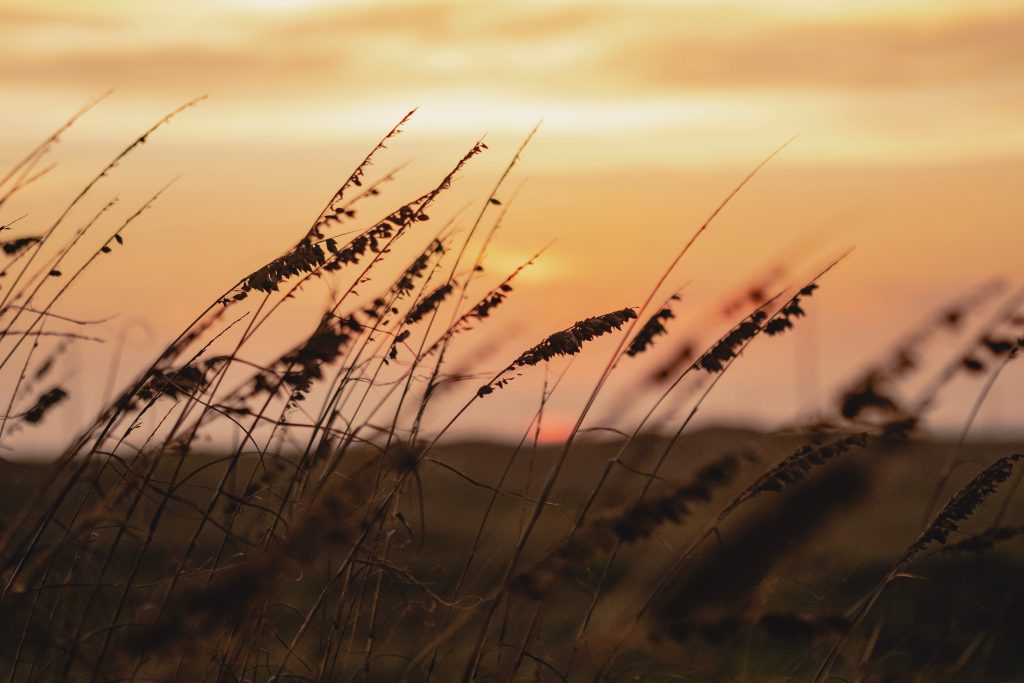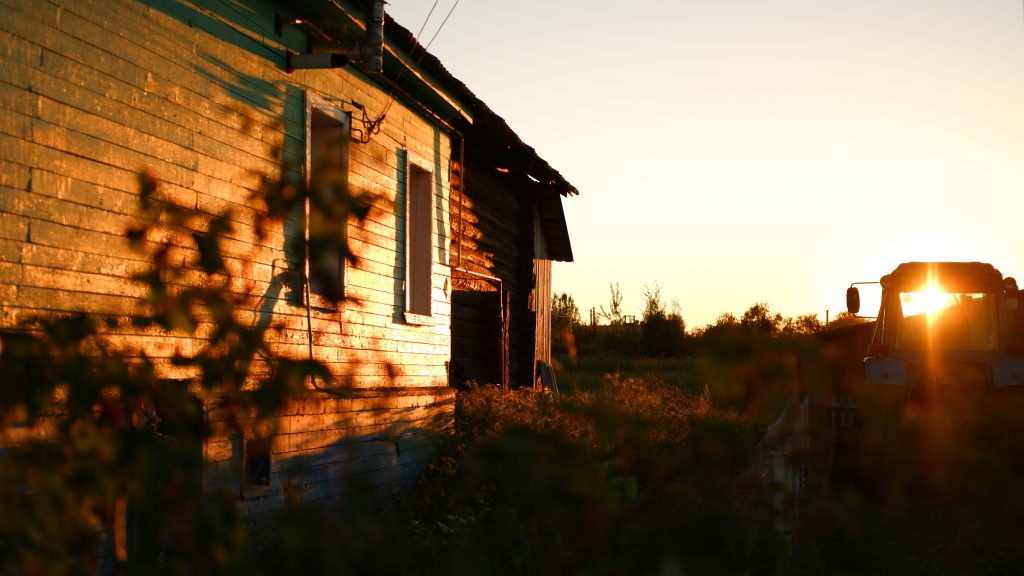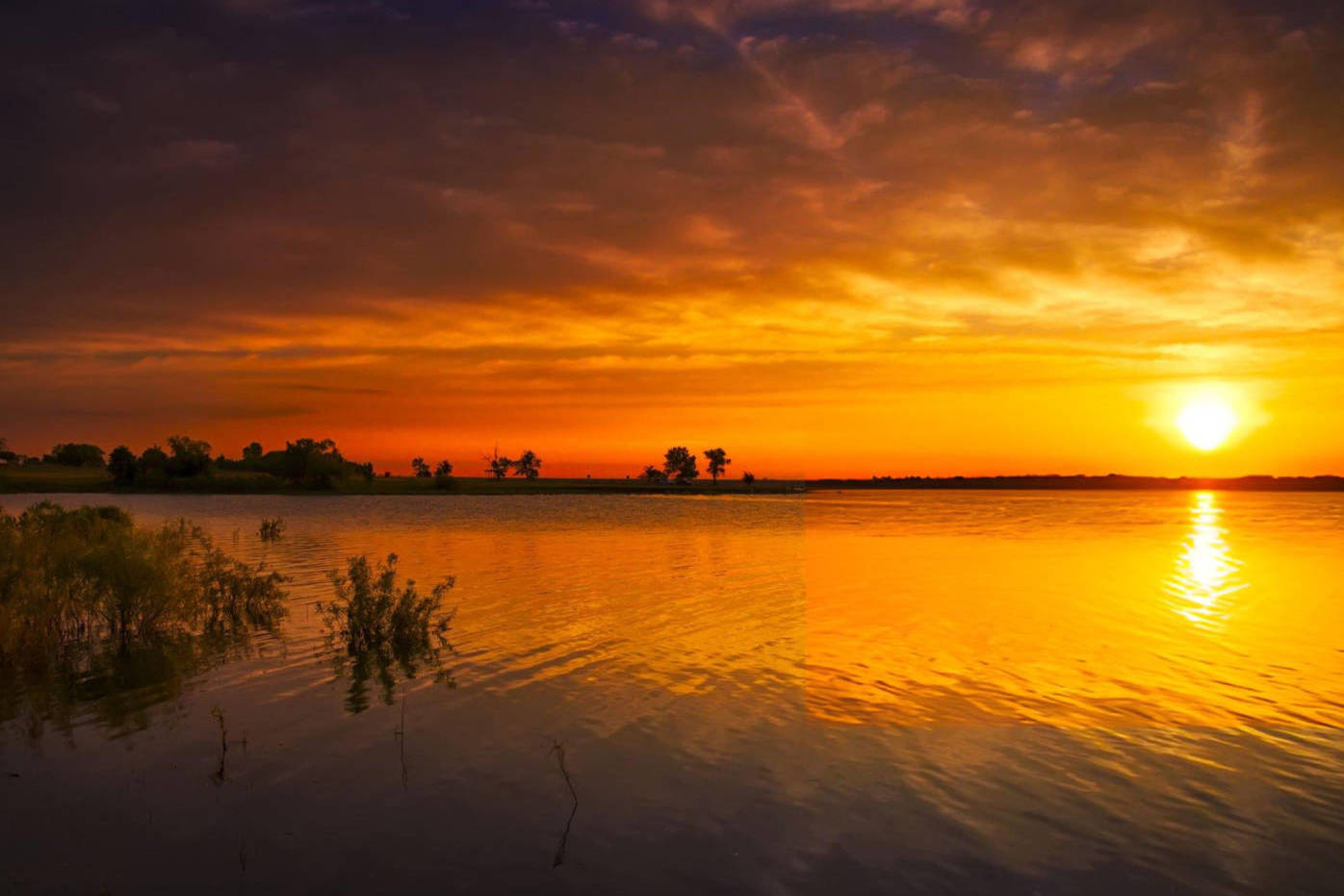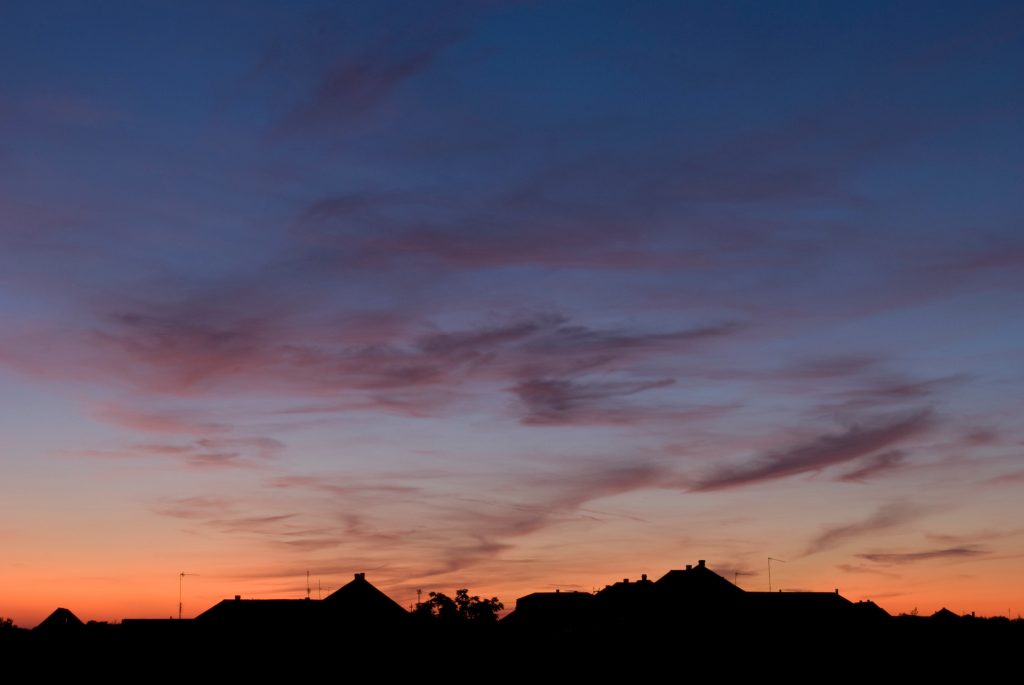Exploring the history of sundown towns in Texas reveals a less celebrated part of the state’s heritage.
When most people think of Texas, they think of cowboys, cattle, and wide-open spaces. But there is a dark side to the Lone Star State that many people are unaware of. If you’re ever driving through the great state of Texas, keep an eye out for any “sundown towns.”
What is a Sundown Town in Texas?

A sundown town actively enforced rules that historically prohibited non-white people from living or staying there after dark. This term typically refers to towns that were racially segregated during the Jim Crow era. However, there are also examples of towns that excluded other minority groups, such as Jews, Mormons, Native Americans, Chinese Americans, and Mexican Americans, to name a few.
History of Sundown Towns in Texas and across the USA
Sundown towns started as a way to keep African Americans from moving into all-white neighborhoods and taking white jobs. In the late 1800s and early 1900s, many towns across the United States passed ordinances that prohibited Black people from living within town limits. Often, authorities coupled these ordinances with violence and intimidation tactics to ensure that Black people complied with the rules.

The earliest legislative restriction came in 1714 from New Hampshire called “An Act To Prevent Disorders In The Night.” This law was passed to blame African Americans, Native Americans, and Molatto servants and slaves for nighttime disorders.
The law outlawed people of color from being out of their home after 9pm.
Sundown towns in Texas have a long history, dating back to the days of slavery. Even after the Civil War ended and slaves were emancipated, many Texas towns remained segregated. In some cases, signs were posted at the town limits to warn non-whites that they were not welcome after dark.
Unwritten Rules of Sundown Towns
A sundown town does not need to have laws or signage explicitly stating that non-whites are not allowed. In many cases, the town’s unwritten rules are enough to keep minorities out.
For example, a town may require all businesses to close at sundown. This makes it difficult for Black people to find employment or forces them into service positions like cooks, maids, and butlers. Additionally, a town may have only one or two hotels that refuse to serve non-white guests.
Sundown towns were once very prevalent throughout the United States, and their legacy unfortunately still persist. However, there are still a few sundown towns in Texas that you should be aware of if you’re ever driving through the state. Here are 14 of them:
Alba, Texas
Between the crossroads of U.S. Highway 69 and Farm to Market Road 17, Alba, Texas, might seem like just another small town on the map. With a modest population of 473, this community near Lake Fork may seem like a wonderful place.
Unless you’re Black.
The town was founded in 1843 as an all-white community.
In 2000, the town made headlines for being 98.6% white. Theories on how the community got its name differ. However, a popular one claims the town’s name is derived from the Latin word for “white,”. It was named because settlers did not permit Black people to live there.
Alvin, Texas
Alvin is a city in Brazoria County, Texas with a population of approximately 27,000 people. Of the total population approximately 1,000 of them are Black.
In 1933, Roy S. Lapham was murdered in a mysterious ax slaying on Christmas morning. The suspect was a Black man, but citizens refused to believe that theory. Primarily, because “practically no negroes are allowed to live in Alvin and that Lapham’s home was near the Mexican quarter of the town,” as stated in The Galveston Daily News.
Comanche County, Texas
The History of Comanche County in the 1800’s
Comanche County, Texas, holds a place in history as the only U.S. county to officially adopt sundown town policies. It’s no shock then that Comanche County is home to a huge number of sundown towns in Texas.
It started when Moses Jones, a Black man in Comanche County, killed two white and two Black children. He then set fire to his white employer’s home in 1875. He was arrested and shot.
The people of Comanche County initially determined that this was a unique situation. They decided it was OK for Blacks to conitnue to live in the area.
But in 1886 a Comanche Black man was accused of killing a white woman. He was immediately lynched, and a meeting of all white citizens came together to discuss the future of their towns. They determined that two killings by Black men of white people were too much. They wanted to eliminate the Black population from their town.
“It was resolved to give every African American in the county one week’s notice to leave the county, and committees of men from different sections of the county were appointed to carry out the will of the white people.”
Black residents were given a few days to get out of the county. To enforce this, men from various parts of the county were appointed to ensure compliance. Signs were posted around the town that Black people were not welcome, and if they’re caught in the area after dark, it would not end well for them.
The History of Comanche County in the 1900’s
By 1900, the census showed that of a 23,000 population, every person was white. And apparently, as mentioned in a 1953 book about the Negro Exodus from Comanche County, the town took great pride and promoted the fact they had an all-white population.
A news clipping from The Courier-Journal discusses the exile of Blacks in Comanche from the perspective of a white man. He mentions whether a different town should consider exiling Blacks as well.
“Our people [white people], of course, gave negroes all the morals they have…I lived in a county in Texas [Comanche]…where negroes were not allowed to live, except one family… I couldn’t ask such folk [“brave white Americans”] to do my little bachelor chores – I mean the running of errands and a hundred little things that we don’t hesitate to ask a negro to do. Oh, I missed the negro and never want to be without them as a servant.”
The racist policies had serious long-lasting implications for daily activities and travel. Black train porters were known to hide in baggage cars while passing through the county to avoid confrontation.
The threatening signs were eventually relocated from the train station to the town well after the railroad intervened due to the danger posed to its workers. There’s no clear record of when the sign was finally removed though.
Today, Comanche County is a small community of around 13,594 residents, according to the 2020 census, with a demographic of 73% white and 0.2% Black.
Comanche, Texas
Comanche, Texas itself is worth mentioning as Sundown Town in Texas, as there is a long history of racism and violence against African Americans. The town was founded in 1856, and by 1860, all of the town’s residents were white. In 1940, a Sundown Town book by James Loewen mentions that an organization in Comanche proudly said that their town was “the home of the purest Anglo-Saxon population of any county in the United States.”

De Leon, Texas
Today, there are very few people of color in the town. Many Black children who grow up in Comanche often wish there were more Black kids. In a July 2000 interview, Talila Harlmon talks about how she felt alone in the crowd. If there was a party, she often wasn’t invited; even if her classmates wanted to, their parents wouldn’t allow it. There was no one to really relate to and no hairstylist who could do her hair. She grew up being told that sometimes life is difficult, and you just have to deal with it.
De Leon, a city within Comanche County, has a population of 2,246. The town has a predominantly white demographic, making up over 62% of residents, with Blacks accounting for just 0.62%. They expelled their Black population in 1886.
The demographic imbalance can be traced back white citizens driving out Black residents after a murder and subsequent lynching of a Black man.
This racial purge was not just an act of social cleansing but became a perverse point of pride among locals. A sign warning Black individuals not to let the sun set on them in De Leon was blatantly displayed at the local railroad station.
Elmo, Texas
In 1892, Elmo declared itself a sundown town in Texas. A news article from Weekly Charlotte Observer explains why Elmo, Texas adopted a sundown town mindset. The article bluntly stated that the presence of African Americans depreciated land values and questioned the effectiveness of freedom and education in improving their role as citizens.
Quotes from Weekly Charlotte Observer
“Whereas the race problem is of momentous importance to the Southern people, being one that must be solved some time, and in view of the unprecedented number of recent outrages by black brutes on white children and women…these outrages will be brought every day to our doors.
“…Negro emigrants are pouring in upon us with an increase of ratio which, if not stopped, will result in ruin to our schools and society, and whereas we have in our midst a class of colored citizens that is a menace to society and that prevent a desirable class of white people locating with us.
“…It is the judgment of this meeting that no negro immigrant be given any home in our midst, and that the objectionable ones be peaceably, quiet and lawfully removed from us as soon as the present crop is harvested.”
Breakdown of Elmo, Texas View of Black People
- The issue of race is a big deal for people in the South and they believe it needs to be addressed eventually.
- They claim there’s a rising number of violent acts by Black men against white women and children and worry it will keep happening.
- They’re concerned that too many Black newcomers will overwhelm their community and harm their schools and social life.
- They believe Black residents are dangerous and keeps nice white families from moving to their area (to put it nicely).
- So they’ve decided not to allow Black newcomers to live in their community.
- But they’ll do it only after the current farming season ends.
The language here is really loaded! It reflects some deep-seated fears and prejudices of the time, pitching a rather drastic ‘us vs. them’ scenario.
Leggett, Texas
Leggett is a small unincorporated community in Polk County. Back in 1919, it was known as a sundown town in Texas. The white-led local council at the time imposed a curfew specifically for Black residents, outright banned their gatherings in fraternal or church groups, and even restricted their access to essential public spaces like the railroad station and the post office.
Sour Lake, Texas

Known for having one of the biggest sinkholes in Texas and the first oil well by The Texas Company, this small 1,770 resident town is one of the oldest surviving towns in Hardin County. It was declared a sundown town in Texas around 1903 and promoted violent exiles of Blacks from the area.
Terrell, Texas
Named after Robert A. Terrell, an early European-American settler known for his uniquely designed “Round House” that served as a fortification against Native American attacks, the town was officially incorporated in 1874. Terrell was another sundown town in Texas that historically did not allow Black people to live there.
According to an article from The Weekly Charlotte Observer, in Terrell, African Americans were “barely tolerated” and efforts were made throughout the community to discourage their settlement.
As of the 2020 census, it had a population of 17,465, with 38% identifying as White and 26% as Black.
According to one resident, things have changed for the better. Before, the “town was divided by a railroad track. Blacks on one side and whites on the other.” Now, the town is more integrated with diverse communities.
Despite this, another resident from Terrell said that the community still remains divided. He says, “Most Black people live on the south side of the tracks and you can tell one community from the other.”
Active Sundown Towns in Texas in 2024: Vidor, Texas
Sundown Towns in Texas: Vidor’s History
This is one of the most well-known modern sundown towns in Texas and in the USA because of the large number of Ku Klux Klan members. Klan members frequently marched through town and burned crosses on the hills to intimidate Blacks, causing many to flee.
This exclusionary practice was symbolized by a sundown sign, though reportedly removed in the late 1970s or early 1980s.
The town’s struggle with its racist past was highlighted in 1993 when, following a district court order by judge William Wayne to desegregate public housing in 36 counties in East Texas (including Vidor), the community faced significant backlash. This included a march by the Ku Klux Klan, opposed by a large prayer rally organized by local church leaders.
Despite trying to make housing units available for minorities, the racial climate remained extremely hostile. When four Black families moved into a desegregated housing complex, they faced severe threats. Some of those threats even included a bomb scare, forcing them to leave for their own safety.
Sundown Towns in Texas: Vidor’s Residents Speak Up
One resident, Bill Simpson, shared some of the explicit threats to his life that he heard: “I’ve had people who drive by and tell me they’re going home to get a rope and come back and hang me.”
In the mid-2000s, reporter Keith Oppenheim traveled to Vidor and interviewed residents of town. A resident said that she’d welcome blacks to her neighborhood. Then she said this: “I don’t mind being friends with them, talking and stuff like that, but as far as mingling and eating with them, all that kind of stuff, that’s where I draw the line.”
During the George Floyd protests of 2020, a crowd of 150–200 people attended the Black Lives Matter rally in Vidor.
But that doesn’t mean that Vidor has escaped its past.
Sundown Towns in Texas: A Black Truck Driver in Vidor in 2022
In a TikTok video titled “My night in a sundown town” a Black truck driver Gideon recounted an experience during his stopover in Vidor, Texas. The video, posted on May 3, 2022, has amassed over 875,000 views. See the link to his video amongst other reviews from Vidor, Texas among Black Travelers.
Gideon shared that many Black Texans had warned him against visiting Vidor due to its reputation.
Despite arriving at 5:30 pm with a delivery not scheduled until 8 am the next day, Gideon encountered unsettling signs of racism. This includes multiple Confederate flags and a disturbing effigy of a Black man hanging from a tree. At the delivery site, he overheard a security guard on the phone, referring to a “code red” and expressing reluctance to ensure Gideon’s safety after business hours.
Shortly after, another individual hurriedly unloaded Gideon’s truck and urgently advised him to leave before sundown. He even cautioned that local police might not offer protection. Taking this advice, Gideon drove to Beaumont, where he spent the night, keeping a rifle close for safety.
Woden, Texas
Like other sundown towns, Woden, Texas was an all-white community that didn’t allow African Americans to live there. Unincorporated with about 137 people according to the 2000 census, Woden is still not a very welcoming place to people of color.
Killeen, Texas
Killeen, Texas, a city deeply influenced by its proximity to the military base at Fort Hood, has undergone significant demographic changes since the mid-20th century. In 1950, Killeen did not have any Black residents. However, by the early 1950s, this changed because of the development of Marlboro Heights, an all-Black subdivision.
The military presence at Fort Hood, which started during World War II, was essential in reshaping Killeen. During the 1940s, a Black radio operator stationed at Fort Hood reported that the few Black civilians working in Killeen had to leave the city before sundown to avoid violence. But by the mid-1960s, the increasing number of Black soldiers and employees at the army base contributed to breaking down these racial barriers.
Today, Killeen is a racially diverse community and no longer considered a sundown town. With a population of 153,095 as per the 2020 census, Black residents now make up around 35% of this population.
Another sundown town in Texas is Grand Saline, a city in East Texas’ Van Zandt County, that has a population of 3,107, with over 71% identifying as White and just 0.51% as Black or African American.
Grand Saline, Texas

Historically, Grand Saline was not always predominantly white. In the late nineteenth century, following the Reconstruction era, the city had a significant Black population.
But after a violent outbreak, described by some as “pogrom” (no idea what this means), resulted in the mass killing of Black residents. Some reports from these interviews also mention that the bodies of the victims were mutilated and publicly displayed.
By the late twentieth century, their sundown town status was a point of pride for some residents.
There were accounts, like one from Andrew Puller, a former slave, recalling a sign in Grand Saline that read, “N**er, don’t let the sun go down on you here.”
Similarly, a resident from a nearby Texas town shared childhood memories. Coaches evidently made threats to leave misbehaving Black students in Grand Saline as a form of punishment.
As recent as June 2014, a local resident noted that there are five Black families living in Grand Saline. So there does appear to be a small number of Black residents, but definitely not a strong Black community.
Also in June 2014, Charles Robert “Charlie” Moore, an American Methodist minister and social justice activist, tragically ended his life through self-immolation. He did this in Grand Saline to protest against pervasive racism. Throughout Moore’s life, he had advocated against racial and social injustices. He also went on a hunger strike to protest the treatment of gays and lesbians by the United Methodist Church.
Archer City, Texas
Archer City is a small town with a population of 1,601, including 1,372 white residents and 14 Black.
During the 1920s and 1930s, signs explicitly warning Black travelers against staying in the town after dark were reportedly posted around Archer City.
Historical accounts from residents, such as the recollections of a family whose grandparents lived there for decades, shed light on the racial atmosphere of the mid-20th century: According to these family stories, there were virtually no Black residents in Archer City during the 1950s and 1960s.
An exception was made for Joe Eddy, a Black man who worked for a local rancher named Mr. Young. Unlike other Black individuals, Joe Eddy was allowed in the town at any time due to his employment with a respected local figure.
More Sundown Towns in Texas?
Some towns are considered “sundown towns” based on the low population of Black residents or persistent rumors, yet concrete written evidence can be scarce. Historical records of explicit racial policies are often not well-documented, leaving only anecdotal evidence or oral histories to fill in the gaps.
Additionally, information about a town’s history of racial exclusion might be buried in less visible sources. While researching for a 2024 update to this article, some information sources have disappeared.
For instance, on platforms like Wikipedia, explicit details of a town’s racial tensions might not appear prominently in the main content but are instead tucked away in citations. This makes it insanely challenging to uncover the full extent of such policies and their impacts.
List of Suspected Sundown Towns in Texas
With that in mind, we wanted to share a few more suspected sundown towns in Texas. Thety are on this list because of their documented history or suspected history (due to its low Black population). See below:
Alamo, Armstrong County, Aubrey, Baytown, Benavides, Bevil Oaks, Big Spring, Boerne, Bowie, Briscoe County, Brownsville, Canadian, Canyon, Carson County, Castro County, Childress County, Collingsworth County, Conroe, Copperas Cove, Cotulla, Cumby, Cut and Shoot, Dalhart, Dallam County, Deaf Smith, Deaf Smith County, Donley County, Donna, Dumas, Edcouch, Evadale, Everman, Fremont, Glen Rose, Goldthwaite, Gray County, Hall County, Hamilton, Hamilton County, Hansford County, Harmony, Hartley County, Hemphill County, Hereford, Hico, Highland Park, Highlands, Hillcrest, Holliday, Hutchinson County, Iowa Park, Irving, Jacinto City, Kirvin, Lake Jackson, Lakeview, Lipscomb County, Lumberton, Montague County, Moore County, Moulton, Nederland, Nocona, Oak Knoll, Ochiltree County, Oldham County, Orange, Paradise, Parmer County, Pasadena, Perryton, Pharr, Phillips, Pinewood Estates, Port Neches, Porter Heights, Potter County, Randall County, Rio Grande City, River Oaks, Robert Lee, Roberts County, San Diego, San Juan, Santa Fe, Scurry County, Shamrock, Sherman County, Slocum, Spearman, Stinnett, Sunnyvale, Swisher County, Throckmorton, Throckmorton County, Tioga, West Orange, Wheeler County, White Deer, White Settlement, Whitesboro, Winnie.
So Are There Still Sundown Towns in Texas?
While the Jim Crow era has passed, there are still some cultural sundown towns in Texas that exist today. If you are a person of color, it is important to be aware of these towns and their histories before visiting or moving to them.
Want to Learn More about Sundown Towns in the USA?
Sources:
- https://justice.tougaloo.edu/location/texas/
- https://www.jstor.org/stable/30237625
- https://www.newspapers.com/article/the-courier-gazette/29356056/
- https://www.newspapers.com/article/the-galveston-daily-news/29073587/
- https://www.newspapers.com/article/weekly-charlotte-observer/29070745/
- https://www.newspapers.com/article/the-galveston-daily-news/29073587/
- https://www.newspapers.com/article/the-courier-journal/29070944/
- https://www.jstor.org/stable/30237625
- https://www.nytimes.com/2000/07/16/magazine/what-they-were-thinking-about-race-alone-in-the-crowd.html
- https://www.newspapers.com/article/weekly-charlotte-observer/29070745/
- https://www.washingtonpost.com/news/morning-mix/wp/2014/07/16/79-year-old-retired-reverend-set-himself-on-fire-to-inspire-social-justice/
- https://www.washingtonpost.com/archive/politics/1993/09/03/a-new-residence-and-a-tragedy/40806717-7d3e-4540-be53-7602edbfe1f8/
- https://www.cnn.com/2006/US/12/08/oppenheim.sundown.town/
- https://www.independent.co.uk/news/world/americas/vidor-texas-kkk-black-lives-matter-protests-a9571156.html
- https://www.newsweek.com/black-truck-driver-tells-horrifying-story-night-sundown-town-texas-viral-tiktok-1706156
- https://en.wikipedia.org/wiki/Red_Summer


Thank you for this information. Very helpful when planning trips or thinking about relocating.
This is valuable information. Thank you.
I’m in San Antonio and it and Seguin were Sundown Towns. I am leaving here and moving back to California where I’m from.
Putting this here for people who are looking for places to live. I don’t know if this still stands – it was 15 years ago.
I moved to a community (not an actual town) outside of Gilmer, Texas years ago called Harmony. Very small – and I never left the house or mingled with people, so I just wasn’t aware of the unwritten rules. Not only this, but there was only one store, a couple churches, a school, and a restaurant. I’m not religious, didn’t like the restaurant, and the store was expensive, so I just wasn’t paying attention to the people around us much. My brother in law is black, and I took him (10 at the time) to the convenience store down the road to get some candy, and shortly began receiving KKK Newsletters placed in my mailbox. KKK! They would say things like “we are not a hate organization, we are (insert nonsense here).”
Of course, then I began to look into this. Never in my wildest dreams did I think these kinds of places still existed. I learned that there were 0 black families who lived in this community and only a handful of Hispanic people, and the community actively drove them out when they tried to settle. It was shocking to say the least. We gladly moved. Thank you for sharing this. People need to know. ♥️
What really incenses me is when people continue to protect these legacies with all their might- even at the horrific pain of others. This happens when one group can’t see the other group as human! A lot of this God forsaken places still exist all over these United States . There can be NO forgiveness if there is not an acknowledgement of harm that was caused and that is still being perpetuated. There are many towns in Tx not listed. ie Conroe, Tx. Baytown( East Houston), it is sickening to know the history and continue to be affected by it in real time. Much despair.
Peace to the oppressed 🕊
Are there sundown towns in Seguin / San Antonio because I lived in San Antonio for 8 years but I don’t do much but work, school and school .
I also go to TLU in Seguin so that’s why I asked ?!
Thank you
What are you talking about? I’ve lived in San Antonio since like 6 or 7, and I’ve never heard, witnessed, experienced, etc San Antonio being a so called sun down town. People just say what ever now days
Seguin and New Braunfels considered safe for black family?
Taaylor I’m from Austin which is 48 miles from new braunfels, new braunfels is decent haven’t been there since I played them in football in high school they def have black folks in that city
Just so sad everyone can’t get along ? It’s all just ridiculous…live and let live.
Thank you so much!!
Help me understand are sundown cities only against black peoples or any non white race? I’m asking bcuz on this site I see no responses from true residents of sundown cities.
I was thinking about moving there and since I’m African American, is it a good place to live
They are against Black people
Now it makes sense as to why neighboring communities of Denton County are prejudice against American Indians. I tried to put a birthing announcement in the DENTON RECORD CHRONICLE Newspaper, and PATTY LAGARD told me in writing that I may word it however I want, but after she noticed I was American Indian and affiliated in a tribe, she denied to publish my birthing announcement. This is her exact wording in her response “We chose not to publish your notice. We thought this would be a regular birth announcement but with all the extra stuff added, we chose not to publish it.”
It’s according to how ignorant the residents in the city are. They may deal with other races but don’t mingle or trust your surroundings. Hatred runs deep in the veins of those infected by the disease. The crazy thing is those towns die off, children move away and don’t go back then the elderly population have no choice but to have blacks taking care of them. Backroad towns pay me well because they have no choice!
I went to new Braunfels I school went where some of my best friends were black!
New Braunfels High School …
I’ve lived in new Braunfels my entire life . Several of my closest friends are black and they lived here their entire lives. None of my friends have ever once mentioned receiving racist treatment from here in town. Yes, it’s true. Very few black people live here as compared to a town 15 miles away Seguin Texas. But the reason for that goes to back before the Civil War.
If you would like to know more please feel free to email me.
I was in New Braunfels late August and I personally saw more white people and I stood out. I am a Hispanic woman but I did not feel threaten. I saw a 4 African American women the whole weekend at this wineries (We kept bumping into them). Of course I was there visiting and they could of been too but not sure how the dynamic is to live there.
Man, I`m from Terrell Tx. and I can tell you, that this article has misinformation. Half the town is black, there are a lot of Mexicans and whites. Trust me things have changed significantly over the years.
The town was divided by a railroad track. Blacks on one side and whites on the other. Not anymore. Terrell has mixed and mingled communities. However, there is still racism just like anywhere else.
Hi Erin, I would love to connect with some of those friends you mentioned and get their perspective. Will send you an email
Hi Zmark, so just checked and town is about 25% Black which is significant but wouldn’t necessarily take away from its legacy of being a Sundown Town. However, we would love to get your perspective since you are from the area. If you go to the main site (https://greenbookglobal.com) you can share a review of the town which we would love to then highlight. Alternatively, you could share a review using the below google form. Let us know.
https://docs.google.com/forms/d/e/1FAIpQLSdG0XBqUEIBOg1BHckY3S7mGGW4I5dpG78VgU3YiDDSy21DVQ/viewform?usp=sf_link
I lived In Denton TX and worked in healthcare in many of the surrounding sundown towns. At the time I didn’t even know what that meant. It was my friends who told me to be careful. They had stories of people who went missing in Bowie TX, and all along the border of Oklahoma, including Whitesboro, Sherman, Denison, Montague, Nocona. When I applied for a position at Bowie Memorial Hospital, the CEO met with me to assure my protection. He arranged for all the newspapers in town, including the thrifty nickel to interview me and take my picture. They also interviewed me on the radio! He told me that the town had a history as a sundown town and had an effigy of a black man hanging with a sign “ nigger don’t let the sun go down on you!” My position was as the Director of Occupational Therapy /the only occupational therapist serving in the inpatient and outpatient department of the hospital as well as in the school district and home health. This had me driving throughout the county. All heads turned when I went out to lunch for the first time. I really found all the folks to be nice as all southerners are reputed to be. I even found myself stuck in the basement of the school (k-12) praying with all the kids and staff as a tornado blew through the playground and overhead. It turned over two semi trucks a block away. The destruction was all throughout the county.
The only direct prejudice I was aware of was when I applied for a loan to purchase a home in Denton and the Bowie Hospital Human Resources director had written a bunch of nasty comments to prevent me from qualifying. The bank official said it bore no negative light on me. It only confirmed her ill will and dark character.
Thank you for maintaining a dialogue about sundown towns. As a traveling therapist, I find it important to know the racial history of the areas I choose to work in even if only temporarily. So many recruiters don’t know and most companies don’t care. They just want to fill the positions. As another writer said earlier: the people are aging and many of the younger folks leave, so these old folks need to be cared for and rehabilitated by people of color or other ethnicities for whom they were bred to hate and abuse.
I live next to New Braunfel in Schertz and Cibolo and there is a good diversity with no issues that I’ve encountered. If you’re just visiting not sure how you missed it.
We left California during covid and came to San Antonio. We left a year later and came back, best decision we made.
My family never experienced racism until we moved to Texas. Never again!
San Antonio isn’t a sundown town, it’s just Texans hate Californians..
I live in Houston and was immediately told about Vidor and Alvin. Isn’t Jamie Foxx from Terrell, TX?! And, the commenter above who mentioned San Antonio…they were mentioning Sequin which is close to SA. They were not saying SA was a sundown town smdh. A few have told me Yoakum after I went there to work a few times, but I was always treated quite well.
I’m from Baytown. I viewed the comments to see if it was going to be listed.
Conroe, TX
The Woodlands, TX should be on here
I moved from the woodlands to spring where it’s a mixed suburb. White people call it the bad side of 45
I am a single black mother, who moved to San Antonio in the summer of 2005. I have 6 children. Whom 4 of them grow up here in San Antonio.
But from my experience. San Antonio was the best place to raise a family. My children are all grown now. They took have children and love raising them here. We would not have it any other way.
Why can’t people get along with each other?
Places where that stuff has happened like vidor I wouldn’t move too but a large percentage of Texas is not like that anymore..there’s still idiots in the world so there’s passive racism everywhere.just remember to cross your Ts and dot your I’s you should be fine..I’m from Texas and San Antonios not a sundown town at least by whites ,you gotta watch our Hispanic older brothers they more racist there than any white man could be to melanated ppl if u ask me ..not the younger generation but the older ones.the younger Hispanics are black ppl ..talk like us ,look like us with diamonds in their mouths and tattoos and they rock with us .shot out to my eses from the lone star state!! The younger generation of white people here in Texas don’t go for the mistreatment of blacks or any other ethnicity.racism is here so be aware ,and ready to remind anyone who treads on you but it’s getting better..
Vidor was a dreadful experience. While returning from New Orleans, my cousin and I, desperate to use the restroom, reluctantly chose to stop in Vidor, TX. We opted for the Waffle House along I-10, but the moment we walked in, it was as if we had stepped into a surreal movie scene. Everyone halted their conversations and activities, glaring at us with a “WTF are you doing here?” expression. Terrified, we sensed the hostility, swiftly turned around, and fled to the car in tears. We cried all the way to Houston, vowing never to set foot in Vidor again. The palpable animosity in that place was unsettling.
I (of South Asian descent) stopped in Quanay, Texas over Christmas break for lunch at Sisters Cafe.
This old man sees my aggie cap and starts telling me this:
“I was at Texas A&M back in the 80s when some Iranian students decided to picnic on the lawn of the Memorial Student Center. Since this was disrespecting our country, we went and got our horses. We dragged them out to the railroad tracks. But we let them go. They tried to file a police report, but there were no witnesses. What can you do?”
I stayed quiet and looked around the room at the other white folks listening to his story. Then he continues, ” There aren’t many draggings these days. We should have more of them now days.”
My son (freshman in college) quickly gathered our stuff and left the restaurant.
Clarendon tx should be put on this list they wont even talk about black american history here and they have a freaking hanging tree!!
In the North side of the tracks in Terrel its a mixture if Hispanic and white folks. But don’t be fooled. Most black people live on the south side of the tracks and you can tell one community from the other. You might also look into Crandall. I grew up there. They even have different cemeteries for white and black people.
Thank you for this information. It helps me to educate others about true black history.
Thank you for sharing that experience. Sorry you and your family went through that. Glad you lived another day to share it.
Why is that? Just curious why Texans hate Californians.
Amen